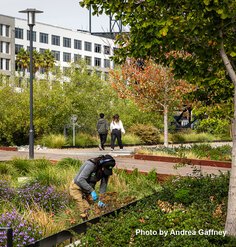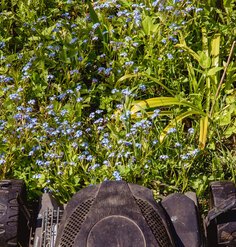Vectorworks to Estimate Landscape Performance
By Doug Robb, MLA Candidate, University of Toronto
As landscape architects, we are faced with the challenge of situating our designs within a broader ecological and climatological context. A design proposal must invariably contend with the active forces of its environment, however, these forces (such as rainfall, flooding, heat gain, wildlife migration, etc.) can be incredibly difficult to model through conventional CAD and BIM software. The strategy of simulation modelling is often employed, whereby multiple design iterations are compared and contrasted based on a standard rubric. Yet this form of exploratory design can be time-consuming and is often problematized by the dual expectations placed on landscape architects to quickly represent their creative vision whilst simultaneously ensuring its performative functionality.
The Landscape Architecture Foundation (LAF) is continually looking for new tools and methods to evaluate landscape performance. LAF asked me to investigate how Vectorworks Landmark software could be used to estimate the performance of a given design.
For landscape architects, the greatest strength of Vectorworks Landmark lies in its ability to handle a wide variety of file types, and to modify these external files through the built-in Site Planning toolsets. These tool sets are analogous to pre-defined CAD blocks which cater specifically to the requirements of landscape design, from an extensive library of plant material and irrigation heads to site modifiers and grading tools. When used in tandem, these features allow a designer quickly to import a survey shapefile, modify the topography through massing models, hardscape, or planting, then begin to calculate site metrics such as runoff, cut and fill, and shading.
For example, the Hardscape Tool Set can be used to assign different materials and classes to different components of a drawing. The software can then calculate site statistics, such as ratio of hardscape to softscape, site permeability, and potential runoff by “Creating a Report” and selecting from the preloaded lists of site metrics. Using this straightforward process, peak runoff rate can be calculated using the Rational Method. Vectorworks’ built-in libraries of blocks and calculation tools make quantitative landscape analysis easy and relatively straightforward.
Currently, Vectorworks Landmark is a powerful tool for landscape architects to assess the impact of their designs upon the environment. In the words of Carl Steinitz, this design-led approach to project evaluation is useful for conducting site analysis and generating project metrics, however it is a somewhat limited strategy for generating future design possibilities. It would be tremendously useful if the rigorous analytical functions of Vectorworks Landmark were better able to foster a decision-based approach to landscape design. For instance, a number of possible design outcomes could be generated by limiting certain variables such as site permeability or shade cover. This feature is partially available through the intelligent Massing Model tool set, which allows for data-driven design by appending building data and code requirements to flexible massing models, however an equivalent for landscape performance is not readily available. This process would not only provide landscape architects with a wider range of design alternatives, but also encourage a more participatory design process with non-specialised stakeholders, such as environmentalists or community groups.
While Vectorworks Landmark may not have the full capabilities offered by more specialized programs such as ArcGIS or Photoshop, its “jack-of-all-trades” approach to file management and site design makes it a powerful tool for the simulation modelling of multiple proposals within a single program. I believe this fast and flexible workflow is an invaluable tool for landscape architects who wish to efficiently test the environmental repercussions of their designs. In this sense, Vectorworks Landmark allows for the rapid prototyping of landscape futures as part of both a creative process, and an analytical device.











